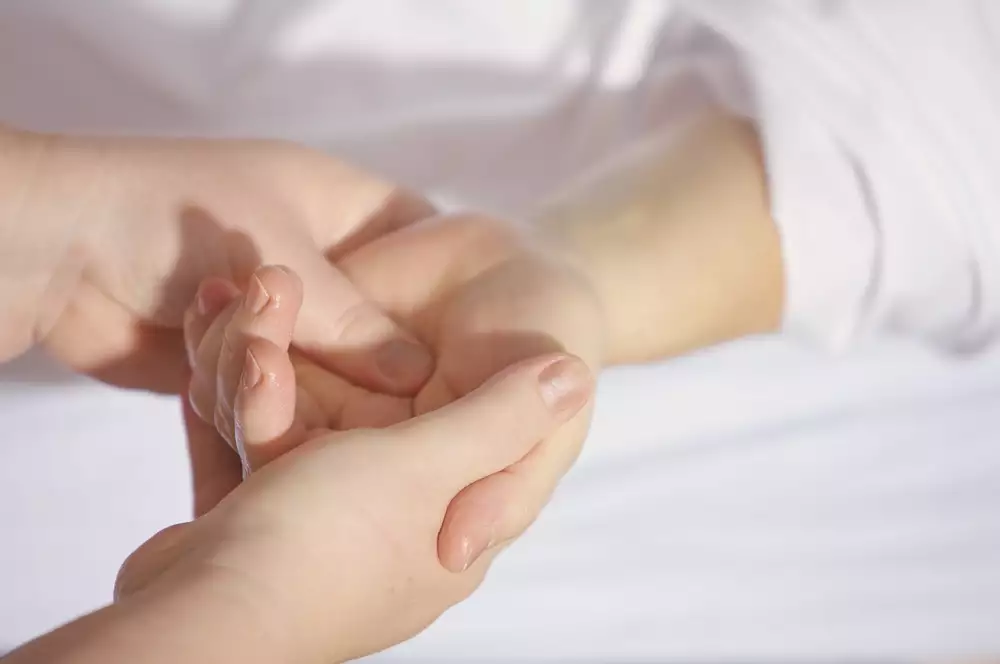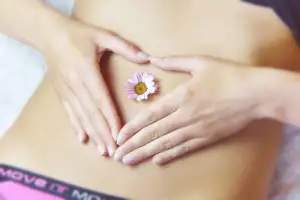Freeze your health problems: everything you need to know about cryotherapy

- Definition of cryotherapy
- History of cryotherapy
- Principles of Cryotherapy
- 1 Topical Cryotherapy
- 2 Whole Body Cryotherapy
- Uses of cryotherapy in medicine
- 1 Treatment of inflammatory diseases
- 2 Rehabilitation after sports injuries
- 3 Cosmetic uses of cryotherapy
- Cryotherapy Precautions
- Advantages and disadvantages of cryotherapy
- Sources used
Cryotherapy is a therapeutic method that uses low temperatures to affect the body. In recent years, it has become increasingly popular and has found applications in various fields of medicine, sports and cosmetics. Cryotherapy can help with joint and muscle pain, inflammation or recovery from injuries. In this article, we take a closer look at this fascinating healing method and its effects on the human body.
Definition of cryotherapy
Cryotherapy is a healing method that uses extremely low temperatures to treat various ailments. This therapy involves the short-term and controlled exposure of the human body to very low temperatures, which can be achieved by using special equipment such as cryochambers, cryosauna or the application of cold compresses. Cryotherapy can help to reduce pain, inflammation and swelling and also stimulate the immune system. This therapy has become especially popular with athletes, but it can also help people suffering from chronic pain or autoimmune diseases. Although this type of therapy does not replace conventional medicine, it can be a very effective adjunct to standard treatment.
History of cryotherapy
Cryotherapy, also known as therapeutic cryotherapy, is a modern healing method that uses extremely low temperatures to stimulate bodily processes and treat a variety of medical conditions. The history of this therapy dates back to ancient Greece, where ice baths were already used to treat muscle injuries and pain. In modern times, the first cryotherapy chamber was created in 1978 by Japanese doctor Toshima Yamaguchi. Since then, this therapy has spread all over the world and has become popular among athletes and patients suffering from rheumatism, arthritis or skin diseases. Today, there are many forms of cryotherapy and new applications of this effective treatment method are constantly being discovered.
Principles of Cryotherapy
Cryotherapy is a therapeutic method that uses extremely low temperatures to treat a variety of health problems. The principle of cryotherapy is to apply short-term, controlled cold to a specific part of the body to improve circulation, reduce pain and swelling, modify immune system function, or promote recovery from injury. Cryotherapy can be applied either generally to the whole body or locally to specific parts such as joints, muscles or tendons. In addition, cryotherapy is also used in cosmetology for skin rejuvenation and cellulite reduction. Although cryotherapy can be uncomfortable in some cases (such as when applied to the feet), it is an effective and safe alternative to traditional medicine for many people.
1 Topical Cryotherapy
Local cryotherapy is a treatment method that focuses on treating a precise area of the body using low temperatures. This therapy is based on the principle of using cold applications to improve blood circulation and pain control. Different types of applicators are used in topical cryotherapy, such as ice gel bags or cryoprobes. These devices allow precise and effective treatment of severe muscle, joint or tissue pain. Local cryotherapy is often used for sports injuries and trauma, but also as part of rehabilitation after surgery or for chronic musculoskeletal pain.
2 Whole Body Cryotherapy
Whole body cryotherapy is a modern method of therapeutic intervention that uses extremely low temperatures to treat a variety of ailments. In this therapy, the patient undergoes a short-term exposure to temperatures around -110°C to -160°C in a special device called a cryochamber. This treatment not only helps to relieve pain and inflammation, but also increases the body's energy and resistance. Whole-body cryotherapy has become a popular method, especially among elite athletes and people suffering from chronic pain. It is a safe procedure, but requires careful monitoring under the supervision of a specialist in the field.
Uses of cryotherapy in medicine
Cryotherapy is becoming an increasingly popular alternative to traditional methods of treatment in many areas of medicine. This therapeutic method uses extremely low temperatures to stimulate the overall regeneration of the body and help patients manage various health problems. Cryotherapy can be used to treat pain, swelling, inflammation and even blood clots. Because of its anti-inflammatory effects, cryotherapy is often recommended as part of rehabilitation after surgery or sports injuries. In addition, cryotherapy has been shown to stimulate the production of endorphins and serotonin, which helps reduce stress and anxiety in patients. Although there are several side effects associated with this therapy, modern technology allows cryotherapy to be applied in a safe and effective manner, making it an interesting option for many patients seeking alternative treatments.
1 Treatment of inflammatory diseases
Cryotherapy is one of the treatment options for inflammatory diseases. This therapeutic method involves the application of extremely low temperatures to the affected parts of the body, thereby reducing inflammation and pain. Cryotherapy is often used in the treatment of arthritis, rheumatoid arthritis, sports injuries and other inflammatory conditions. Due to its rapid effect and minimal side effects, cryotherapy is becoming an increasingly popular alternative to traditional treatment methods.
2 Rehabilitation after sports injuries
After sports injuries, rehabilitation is crucial for a quick and successful recovery. Modern methods include cryotherapy, which is the therapeutic use of extremely low temperatures. This method is becoming increasingly popular and brings many benefits such as reduction of pain, swelling or muscle tension. Cryotherapy can be applied to many sports injuries from minor sprains to broken bones and complicated surgeries. With this method, athletes can recover faster and be ready for their favorite activity again.
3 Cosmetic uses of cryotherapy
Cryotherapy is a modern method of medical and cosmetic treatment that uses extremely low temperatures to improve health and aesthetic appearance. Here are three cosmetic uses of cryotherapy:
1. Improving skin quality - Cryotherapy can help improve the appearance of your skin by increasing circulation and promoting collagen production, which helps to reduce wrinkles and enhance skin elasticity.
2. Cellulite Reduction - Cryotherapy can be an effective means of reducing cellulite and loosening tissues by targeting the collection of fat under the skin.
3. Soothing irritated skin - If you have sensitive or irritated skin, cryotherapy can help reduce inflammation and promote skin regeneration. The cooling effect of this method can relieve your skin of itching, redness or other discomforts associated with sensitive skin.
Cryotherapy Precautions
Cryotherapy, or the therapeutic use of low temperatures, is an increasingly popular method of treating various diseases and disorders. However, certain safety precautions must be observed when performing cryotherapy to avoid injury to the patient. Some of the basic precautions include protecting the eyes and mouth from nitrogen gas, using special protective clothing and footwear, regularly checking the gas level in the room, and observing set exposure limits. It is also important to ensure that qualified personnel with sufficient training in the use of this method are available. With proper precautions, cryotherapy can be a safe and effective method of treatment.
Advantages and disadvantages of cryotherapy
Cryotherapy is a modern method of treatment that uses extremely low temperatures to affect a patient's physical condition. This therapy has a number of advantages, but it also carries some risks.
The main benefits of cryotherapy include pain relief and a reduction in inflammation and swelling. As a result, it can be used as an adjunct to conventional treatment for patients with arthritis, muscle or joint injuries, or even as cancer prevention.
Another positive aspect is the stimulation of the body's metabolism, which can have a positive effect on improving overall fitness and the immune system. Some people feel revitalized and energetic after cryotherapy.
However, in addition to these benefits, there are also potential risks of this therapy. For example, if it is not performed in the right way or if a thorough prior consultation with a doctor is not undertaken, patients may suffer from hypothermia or even burns. In addition, the period of exposure to extremely cold temperatures can be dangerous for people with certain medical conditions.
However, cryotherapy is becoming an increasingly popular and successful treatment option, as many people are reporting positive results. In any case, patients should think carefully about this therapy and consult a professional to ensure the safety of their health.
In conclusion, cryotherapy is becoming an increasingly popular alternative to traditional treatments for pain and inflammation. This method, using extremely low temperatures, can effectively affect bodily processes and promote tissue regeneration. Although there are some risks associated with the application of cryotherapy, the advantage of this procedure is its relative safety and non-invasiveness. Thus, cryotherapy can be recommended for a number of problems, especially muscle and joint pain, but also for cosmetic purposes or to improve the general condition of the body.
Sources used
In writing this article on cryotherapy, several sources were used to help provide a comprehensive and scientifically based view of the topic. The sources used include studies published in peer-reviewed journals such as The Journal of Sports Medicine and Physical Fitness, The Journal of Strength and Conditioning Research, and others. In addition, information from websites of specialist cryotherapy companies and news portals focused on medicine and health were used. These sources provided important information on the mechanism of action of cryotherapy, their safety and contraindications, as well as on the different techniques of applying the therapy. All of these sources contributed to making this article as comprehensive and informative as possible for the reader.
Published: 14. 10. 2023
Category: health




